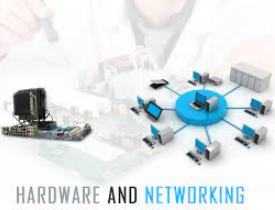Description
Course Name: Post Graduate Diploma in Computer Hardware and Networking
Course Id: PGCHN/Q0001.
Education Qualification: Graduate.
Duration: 370 Hrs (Equivalent to One Year).
Total Credits: 18.
How You will Get Diploma Certificate:
Step 1- Select your Course for Certification.
Step 2- Click on Enroll Now.
Step 3- Proceed to Enroll Now.
Step 4- Fill Your Billing Details and Proceed to Pay.
Step 5- You Will be Redirected to Payment Gateway, Pay Course and Exam Fee by Following Options.
Card(Debit/Credit), Wallet, Paytm, Net banking, UPI and Google pay.
Step 6- After Payment You will get Study Material Login id and Password on your email id.
Step 7- After Completion of Course Study give Online Examination.
Step 8- After Online Examination you will get Diploma Certificate soft copy(Scan Copy) and Hard Copy(Original With Seal and Sign).
Step 9- After Certification you will receive Prospect Job Opportunities as per your Interest Area.
Online Examination Detail:
- Duration- 120 minutes.
- No. of Questions- 60. (Multiple Choice Questions).
- 10 Questions from each module, each carry 10 marks.
- Maximum Marks- 600, Passing Marks- 40%.
- There is no negative marking in this module.
| How Students will be Graded: | ||
| S.No. | Marks | Grade |
| 1 | 91-100 | O (Outstanding) |
| 2 | 81-90 | A+ (Excellent) |
| 3 | 71-80 | A (Very Good) |
| 4 | 61-70 | B (Good) |
| 5 | 51-60 | C (Average) |
| 6 | 41-50 | P (Pass) |
| 7 | 0-40 | F (Fail) |
Benefits of Certification:
- Government Authorized Assessment Agency Certification.
- Certificate Valid for Lifetime.
- Lifetime Verification of Certificate.
- Free Job Assistance as per your Interest Area.
Syllabus
Fundamentals of Information Technology and MS-Office: Introduction to computer, input devices, output devices, internal/ external parts with computer cabinate, data storage, number system, languages, operating system & software packages, ms office, word, excel, ms access, front page, lotus- office (smart office).
Computer Hardware and Maintenance: Introduction to computer fundamental, network cable Connectors type and specifications, importance of SMPS, HARD DISK, internal and external memory devices, SMPS-switched mode power supply importance of SMPS, Hard disk, internal and external memory devices, HARD DISK, memory devices, hardware troubleshooting.
Operating System & Diagnostics Tools: The Eight- step diagnostic procedure, scan tools retrieval of diagnostics information, troubleshooting using diagnostics trouble codes, what is an OS, what are its key functions, the evaluation of OS, what are the popular types OS, basic of Unix and windows, advantages of open source OS like Linux, network OS.
Windows 2007 Server Administration: Installing window server 2008, managing window server 2008, managing storage, monitoring and troubleshooting servers, essential services, file and print services, popular windows network service applications.
Network Essentials & Management: Introduction TCP/IP, delivering the data, network services, basic configuration, configuring the interface, configuring routing, configuring dns, local network services, send mail, configuring apache, and network security.
Principal of Digital Electronics: Electronic instrument, instrument application guide, DC and AC meter, DC ammeter, signal analyzers, distortion analyzers, spectrum analyzer, signal generators, function generator, electron gun, transducers.


Reviews
There are no reviews yet.